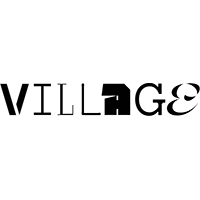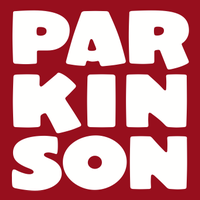ScreenFonts: The White Ribbon, Daybreakers, Wonderful World, The Book Of Eli, Creation, Legion

I have the impression I am slowly catching up with the ScreenFonts series, crawling my way back to the first week of the month. So let's get on with it. When I was reviewing the Afrojet who "bet [I] could fill an entire post on the "Bitch Slap" poster alone." Well, I couldn't, but let's say I managed to still get a decent post out of this month's crop.
Oh, and to all my new Twitter followers – thanks to my inclusion in Smashing Magazine's #followfriday two weeks ago – be warned I am not very good at this (nor at Facebook for that matter). But thanks anyway, I really appreciate your interest. By the way, now that FontFont branded me "Belgian type guru" in a tweet I expect you all to respectfully address me as "Oh Enlightened One". Just so we're clear, for future reference. ; )
One of the best aspects of this job is that I learn so much, almost every single day. Although I started out as the resident "type expert" (what's in a name?) at FontShop BeNeLux in the early nineties I am mostly self-taught, and barely have any academic background in typography. Writing about type, typography, and related topics gives me the opportunity to interview people, and research and investigate specific subjects. This makes it such an enriching experience.
What does that have to do with Das weiße Band (The White Ribbon)? At first sight you'd say not much, because the international poster simply uses Times for the movie title – and for all the other type on the poster as well for that matter. Normally I would rail against yet another example of one of the default fonts and suggest some of the many alternatives. Much to my own surprise I found myself quite liking how it is used in this poster. One could argue about some minor kerning issues, but the restrained, self-effacing appearance of this workhorse face perfectly suits the emotionally detached image. I guess only overused and thus overly familiar typefaces can become inconspicuous to such a degree. The poster design itself is very effective. By showing the characters quite small, shot from from the back, in a gateway surrounded by a leaden amount of black, the poster suggests the dark theme of the movie in a bizarrely uninvolved way. Wonderfully weird.
If I were more at home with psychoanalysis and the teachings of Sigmund Freud I'd also incorporate birth and the symbolism of the vagina in my review of this poster. But I am not. I could. But not really.
The original German poster translates the story – abused and suppressed children in a small village in the north of Germany during the years just before World War I – in a more in-your-face manner. Whereas the international version is simply brooding, this one wears raw, almost tangible emotion on its sleeve. These tears look real, they feel real, and there's an unsettling sense of suppressed anger and anguish emanating from the poster. Choosing for plain and unassuming designs, also in the international version, has made the message so much more powerful. In both cases the typography is nicely integrated. The centred type reinforces the design of the former; the asymmetrical type in the latter makes good use of the light and dark areas in the image.
But let's go back to the aspect of learning while doing this job – I noticed something intriguing in the German poster. Right beneath the movie title a tagline is written in a script that looks absolutely alien to me, and impossible to read. The only connection I could make were a number of shapes that looked remotely related to Viktor Solt-Bittner's delightful antique-looking Voluta Script. I decided to do a little crowd-sourcing and posted the sample to the Typophile Type Identification Board. And sure enough, within half an hour the answers started pouring in from various sources.
Kurrentschrift or Deutsche Schreibschrift is an old form of German handwriting based on late medieval cursive writing. In English it has also been called German Blackletter Script. Although many people use the name Sütterlin as well, strictly speaking Sütterlin is but one variant of this type of script, basically a much simpler and less-elegant, monoline upright version that was used in schoolbooks.
This specific digitisation was identified by Jan Erdman as DS-Kurrent from Delbanco (see "Deutsche Schreibschrift"). The tagline was deciphered by Rainer Zerenko: "Eine deutsche Kindergeschichte" (A German children's story). Florian Hardwig pointed out that "[i]t is a clean rendition, yet the imperfect connection from t to (long) s in 'deutsche' gives away the fact that it is a font." Elsner+Flake also offers a Sütterlin script as digital font. Et voilà, another mystery (for me anyway) solved. Should this little digression have piqued your curiosity for this kind of archaic scripts, several links to samples and resources can be found in the Typophile thread.
For the movie poster of The Loss of a Teardrop Diamond Indika Entertainment Advertising resolutely went for a retro look. The portrait of Bryce Dallas Howard and the shady figure of Chris Evans were painted in a convincing 40s–50s style reminiscent of classic Tennessee Williams film posters. The wood type-like skyline sans is H&FJ Knockout, not a vintage design but an excellent modern interpretation of the American gothic. The combination of the warm dark red background and flesh tones with the greyish blue movie title, black hair, and the "overpainted" crisp white area creates some beautiful contrasts. A nice mix of vintage and contemporary.
As far as depicting a dystopian future goes the movie poster for Daybreakers does a pretty good job. I am glossing over the other versions which have some cast members walking up to the camera menacingly (yawn), but this image is neat. It is something of a cross between the human energy sources in The Matrix, and industrial agricultural confinement systems like battery cages. Adding to the creepiness is the eerie blue glow and the impression of utter helplessness of the trapped people while their blood is being harvested. The centred position of the movie title and other text matter enhances the symmetrical perspective. The wide grotesque used for said movie title is Akzidenz-Grotesk Extended.
The teaser poster is quite beautiful; a twisted version of fashion shoots in high end glossies, with their nigh-unwearable extravagant clothes and alien-looking, androgynous models. As an aside, don't get me started on the disastrous effects fashion and beauty magazines have on the self-image of (young) girls. And not because the world of modelling would be dominated by a handful of hysterical ponces drawing women as boys – contrary to what Anita Witzier, Dutch television hostess, claims in the book Stout (Naughty). Many female designers as well depict them as prepubescent girls, with tiny bums and virtually no hips. This has led to the surreal situation that size four models are deemed "too fat" to run the catwalk because size zero (!) is the industry standard, and normal built women are categorised as "plus-sized" in the modelling world. After all the big talk and empty promises this exposes yet again the sickening hypocrisy of the fashion world.
As vampires are all the rage these days – Twilight anyone? – many collateral materials are starting to draw from the same well. For instance the teaser poster above apparently combines elements from a teaser poster and a series of mock advertisements for the HBO television series. I may be reading too much into it, but even the choice of typography seems to reference vampire fangs – the triangular incisions in Delta Jaeger for the teaser poster, and the tiny sharp serifs on ITC Elan for the mock adverts. As for the design of the Daybreakers teaser poster, I wouldn't know if this is a case of conscious plagiarism, or nothing more than subconscious influence.
However that teaser poster for True Blood is way too close for comfort to the Jennifer's Body movie poster. Both were released around the same time, so who can tell which one came first?
There is something quite wrong with this other teaser poster for Daybreakers too. It is almost identical to the teaser posters for 30 Days Of Night, a vampire movie based on Steve Niles and Ben Templesmith's comic book series. As they both were designed by the same company – Ignition Print – this is to be categorised as merely laziness, not actual plagiarism.

The movie poster for Wonderful World suffers from a similar ailment – it looks like a mash-up of Lonesome Jim and The Visitor. By the way, what's with the use of Arial here? I know Helvetica is the official go-to typeface for movies that aspire to win awards at indie festivals, but using the poor man's version is definitely not going to have you score any brownie points.
As if all these weren't enough, we continue with one more (involuntary?) copy. The similarities between the first poster for The Spy Next Door and Spy Kids are manifold – from the dark red background with golden rays of light emanating from behind the actors, to their black battle dress and martial pose, with a line of text above their heads and the movie title at their feet. Even the roof Jackie Chan and the kids are standing on mirrors the triangular shadow cast by the Spy Kids. By the way, that triangular roof section is a staple on comic book covers, and had already been referenced in the Daredevil movie posters. Because the themes of both movies are so much alike the almost identical posters are a bit disconcerting. The Spy Next Door movie title is set in the action movie stalwart Serpentine, a stressed sans with tiny triangular serifs that is also available in a Sans variant.
The second movie poster features the characters on a white background with – surprise, surprise! – big red text. For a comedy? How quaint. The three-dimensional effect on Impact and the shadows are particularly daring. Very original.
I hope the droves of comedy fans will be able to deal with this dramatic departure from the norm, because the movie poster for The Tooth Fairy uses big blue text (here it's Compacta)! This propels this revolutionary design into uncharted territory, boldly going where no comedy poster has gone before. I haven't decided yet which pun I like best – "You can't handle the tooth" pictured above, or "The tooth hurts". Comedy gold!
Excessive photo retouching is one of the scourges of modern day movie posters (and advertising and many other instances where photography is omnipresent – just check Photoshop Disasters). If I were a movie studio promoting a romantic comedy, I certainly wouldn't want the stars in it look like fish-eyed wax models, just like in this poster for Leap Year. There is barely any emotion to be found in their bland facial expression. And using the ubiquitous and fairly neutral H&FJ Gotham – nothing against the face itself, mind you – really doesn't help. The only redeeming factor in this poster is Amy Adams' wonderful red hair and fair complexion against that green backdrop and dress. But a movie poster should be more than just a pretty colour scheme.
Just like "erasing" any emotion from the actors' faces, the stripping of heads is an equally cringe-inducing habit in the production of movie posters. A convincing example of how wrong it can go is the movie poster for Crazy on the Outside. I mean, just look at the mess behind that door/window. I don't think I really need to add anything, do I? And what a weird and unnatural head Tim Allen has (I'm not even convinced that's his actual body). The distressed serif face with chunky serifs is Cheltenham. I think this is the ballsy original, not the sanitised ITC version.
I am a bit torn about Black Dynamite, and so on that I really like pulp and camp when it's done well. No matter if it's a faithful reproduction or a modern interpretation, to make it work all the details must click.
There is something off in this Transylmania in last month's episode for more options in this style. I think it may be the clumsy ageing effect on the edges of the poster that puts me off. It's not subtle enough and looks very "digital", as opposed to the lovely detailed and convincing folds and creases I have seen in other examples. What a pity.
Another post-apocalyptic image, but one that tackles the subject seriously, is the movie poster for The Book of Eli. A contemplative Denzel Washington takes up half the poster, with a city in ruins in the background. It's not exactly revolutionary, but it works well. Denzel's pose, in profile and on one knee against the cloudy sky, gives him a messianic appearance. The rather unnatural lighting actually reinforces this suggestion.
Denzel Washington's silhouette provides a useful dark area to accommodate all the text matter. The treatment of the movie title set in Helvetica Inserat (I think) is somewhere between distressed and painted in white, making it look almost luminescent.
Although the main posters are nothing special, Fish Tank has a very clever alternate poster. Katie Jarvis is shot through the window of her apartment, with all the type floating in a virtual plane parallel to its outer wall. This creates the illusion that we are looking in through a glass pane, as if the scene was situated in – indeed – a fish tank. The drop shadows created by the type on the wall and window are very convincing, and turn this into a surreal yet believable image.
Another very clever design is this movie poster for Creation. The image beautifully encapsulates the astute tagline "Faith evolves". No, Darwin touching the outstretched finger of the orang utan is not a re-enactment of the classic "E.T." scene, ya silly bastichs; this of course refers to Michelangelo's even more classic "Creation of Adam" in his painting on the ceiling of the Sistine Chapel. Presenting the composition on a virginal white background strips away any visual interference and confronts the viewer with the pure, undiluted concept. This is a great idea, well executed. Yeah, I know the type is set in the perennial Trajan, but what gives.
I don't quite understand the alternate poster. I get that the movie also deals with Darwin's inner conflict when his theories go diametrically against his wife's religious beliefs, so the family aspect does play a role. Yet the reason for this saccharine family scene is beyond me. The typeface used for the movie title has me intrigued. It is a pleasant alternative for Friz Quadrata, with a touch of Brothers and a smidgen of Jim Parkinson taking it into antique wood type or sing painting territory. Alas the identification request I posted on the Type ID Board last week has yielded no result so far, so its identity remains a mystery (unless it is a custom designed movie logo).
U P D A T E
I have received news from Demi Hopkins, Creative Director at Carnival Studio who are responsible for this poster design:
Hi Yves,
Its nice to hear my Creation poster has been noticed out there. I put considerable effort into the typography on this one and used OTF features where possible to create something a little unique.
The main typeface used (title treatment, surnames, director credit) was Betatype's Grant Avenue and the secondary typeface was Hoefler Text with its beautiful swash italics.
The movie poster for Legion is one of those designs where I wish they had gone all the way, preferably in a more illustrative style. The premise of the movie is pure comic book fare – at an out-of-the-way diner an all out war between angels and some lone humans decides about the survival of the human race. I was expecting more warped Christian symbolism, more ornamentation, more Gustav Klimt. My gut feeling is that, had they given the exact same base elements to an artist like Bill Sienkiewicz, Dave McKean, Ashley Wood, or the aforementioned Ben Templesmith, this would have looked epic, savage, and ultimately awe-inspiring. Instead, we have a halfhearted upwards gaze, a hesitant sketch of a tattoo, a tame pair of wings; and those weapons… don't tell me he's supposed to be holding that gun in his hand. This was clearly added afterwards, and anatomically speaking very unnatural.
The typography is also lukewarm. Mason (the original Serif cut) is a sound choice as it carries all the right Christian connotations. However the designers chickened out and dared not use either of the original π-shaped "N" characters. Instead they customised a glyph to obtain a more conventional shape, but in doing so they got the structure all wrong: the outer upright strokes need to be the thinner parts, and the diagonal the thickest. The resulting shape looks quite amateurish and detracts from the rest of the poster.
Weirdly enough, the movie poster for To Save a Life immediately made me think of an actual comic book series, also about a fallen angel – the cult classic Hellshock by Jae Lee, one of the great unfinished comic book series of the 90s. The red cross painted on the face in the poster is almost identical to the facial painting of the enigmatic stranger that saves a suicidal young woman. Even the themes of both movie and comic book series share many analogies.
As a piece of design the poster holds up very well, with the intense dark red and deep greyish blues nicely offset against the beige and sepia tones of the background and the figures in the lower left corner. Despite the straightforward structure of the design, there is quite a lot happening, both in details and in texture. The type is one of those grunged up freeware fonts based on Alternate Gothic. Compared to the sophisticated image, the identical fragmentation in the repeating characters is a bit of a let-down. For more distressed fonts see the corresponding FontList.
And finally the movie poster for Saint John of Las Vegas has a distinct comic book vibe going on as well, reminiscent of the covers for 100 Bullets, The Losers (soon to be released as a feature film), and other Vertigo series. The energetic collage of posterised images in warm colours creates a dynamic cluster, nicely framed in a border of black brush strokes, paint splatters, and palm tree silhouettes.
Recreating the typography of vintage landmarks is always difficult. Most of the lettering is often either hand painted or composed with now defunct type styles. I must say the iconic "Welcome to Fabulous Las Vegas" sign was recreated fairly accurately for the movie title. Basic Commercial is an acceptable alternative for the neon letters in the circles. It's very hard to see which casual brush script was used for "of", and "Las Vegas" looks like the real deal. Very nice work if you ask me.
-
 Cangji Fonts
Cangji Fonts
Brand: 仓迹字库
Area: China

-
 JT Foundry
JT Foundry
Brand: 翰字铸造
Area: Taiwan, China

-
 Handmadefont
Handmadefont
Brand:
Area: Estonia

-
·千图字体
-
 HyFont Studio
HyFont Studio
Brand: 新美字库
Area: China

-
 Minrui Type
Minrui Type
Brand: 敏锐字库
Area: China

- ·Troubadour poster, Opera Plovdiv
- ·New York New York, Jazz St. Louis
- ·How to Read a Painting by Patrick de Rynck
- ·Bevésett nevek (Carved Names), vol. 2
- ·XUID Arrays: One Less Thing To Worry About
- ·Amazon Releases Ember Bold Font for the Kindle
- ·Chinese College Student Invents Smog Font
- ·Moving Hands (Helena Hauff Remix) by The Klinik, official video
- ·Once Upon DESIGN: New Routes for Arabian Heritage
- ·How House Industries Designs Its Retrotastic Logos and Typefaces


























